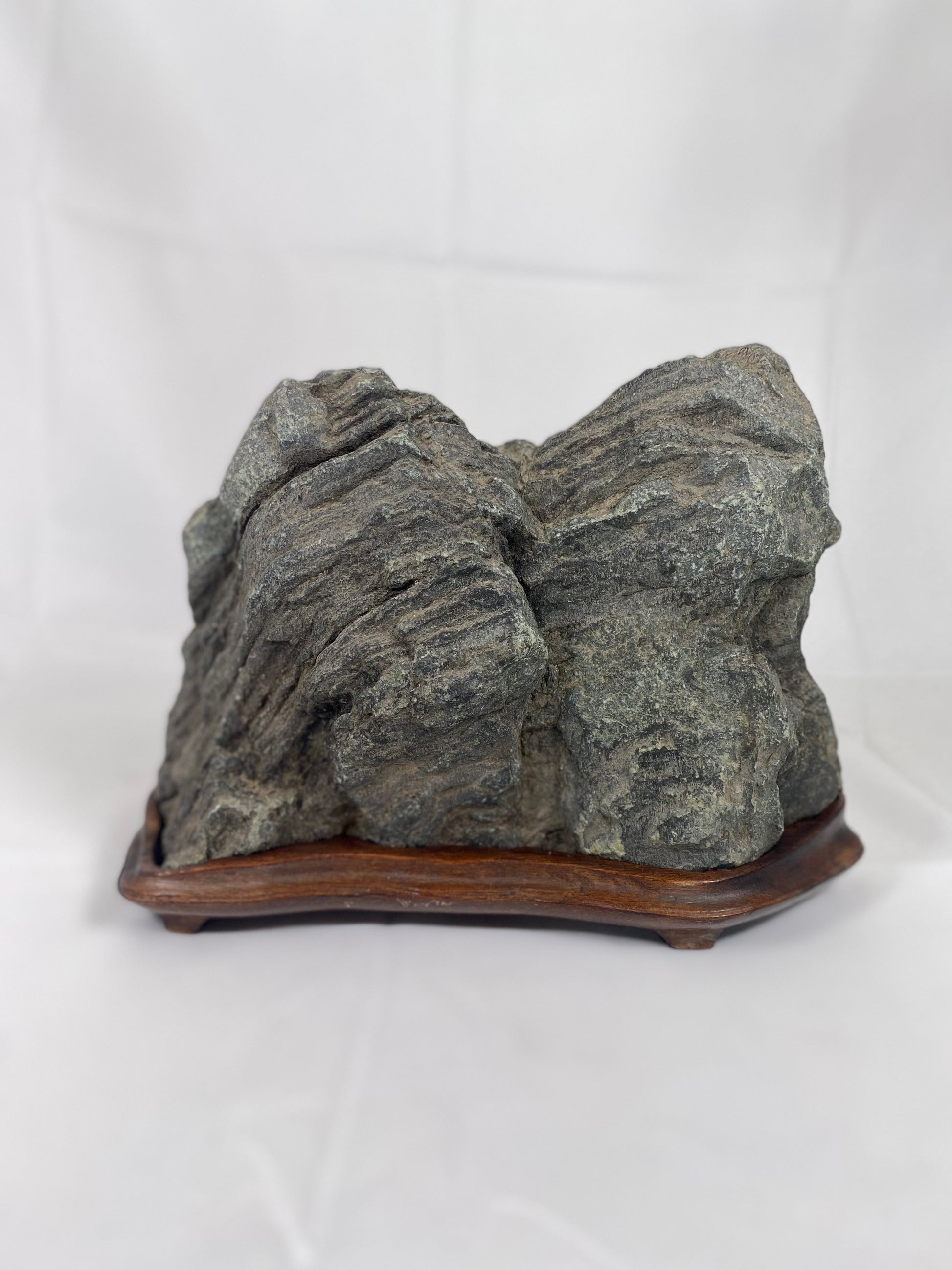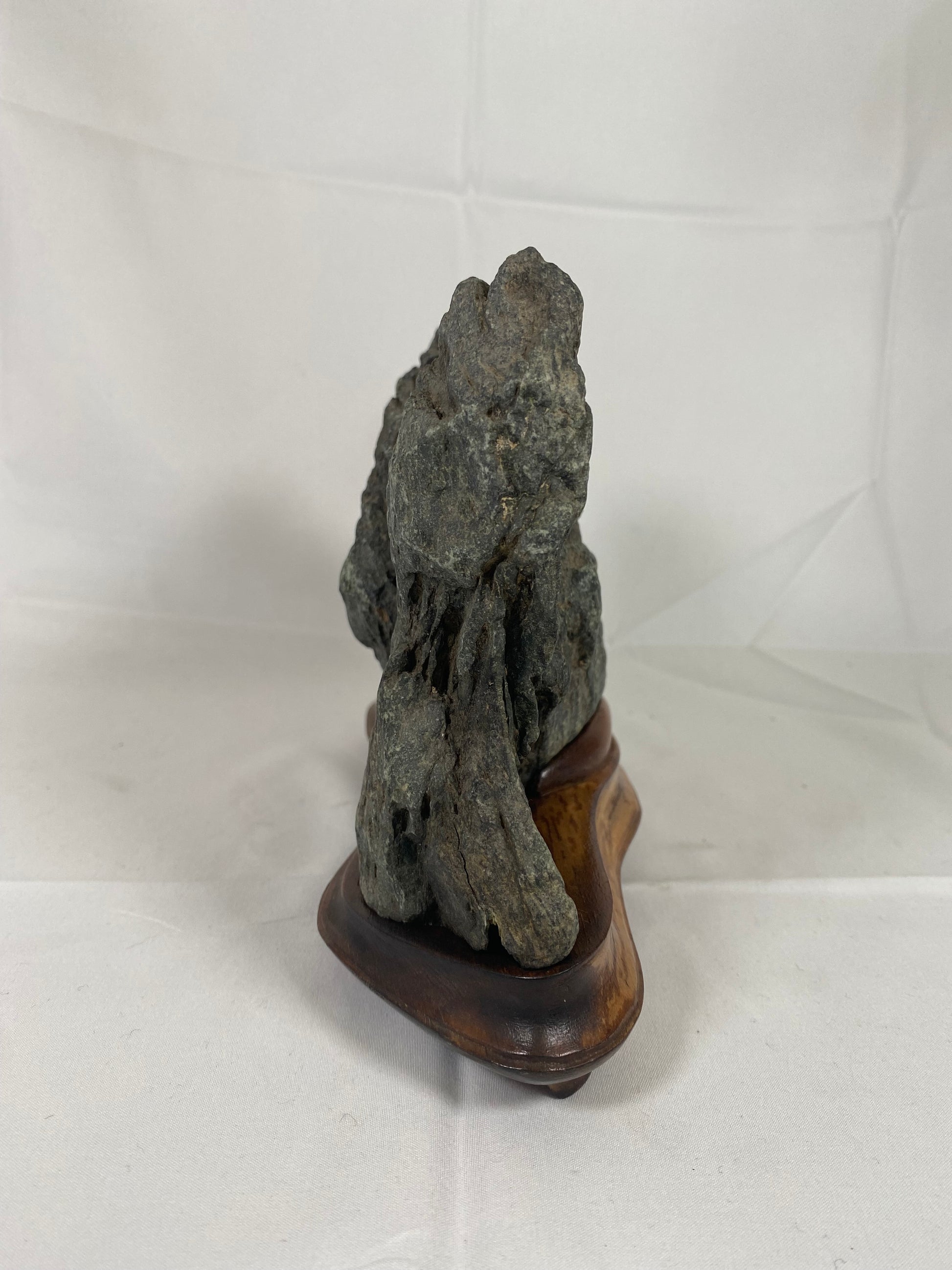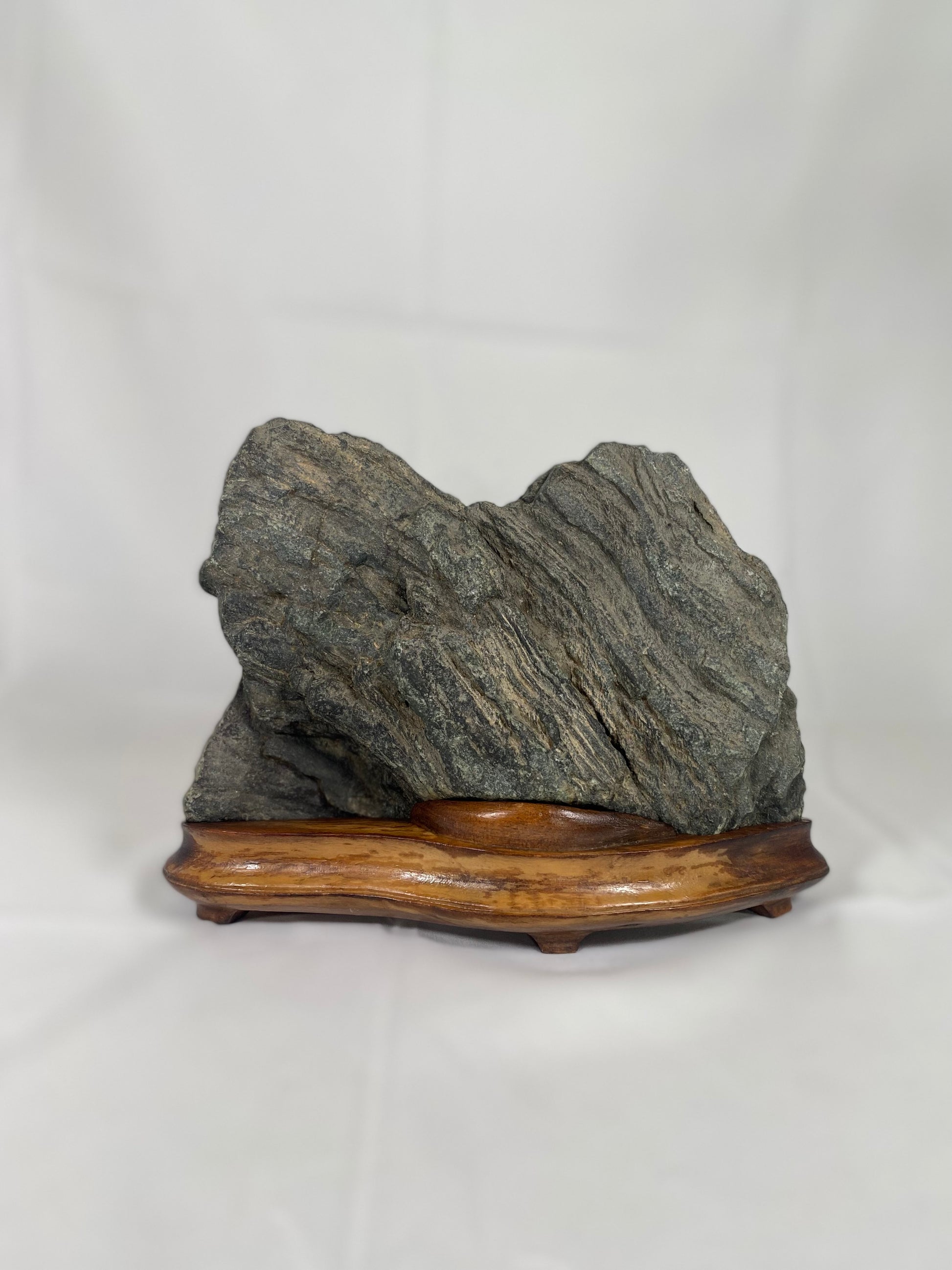cacheantiquessydney
Antique Korean Suseok (Scholar's Rock), Mountain View Form. Namhan River Origins.
Antique Korean Suseok (Scholar's Rock), Mountain View Form. Namhan River Origins.
Regular price
$601.00 USD
Regular price
Sale price
$601.00 USD
Unit price
per
Shipping calculated at checkout.
Couldn't load pickup availability
Suseok, also known as scholar’s rocks, are emblematic of Korean culture. Similar to Chinese gongshi and Japanese suiseki, suseok are naturally occurring rocks appreciated for their aesthetic values. Traditionally, those with desirable qualities can be valued at thousands or even tens of thousands of dollars.
Emblematic of Confucian values, they were highly favoured among the yangban or literati class. After the Korean War and as Korea regained its former prosperity in the 80s, suseok appreciation has enjoyed a revival; notably in recent years, the movie Parasite used a suseok as a key plot point.
Korean suseok are distinct from their Japanese and Chinese counterparts for preserving the aesthetic purity of their stone; no alterations such as cutting, carving or lacquering are traditionally allowed. Unlike suiseki and gongshi, suseok with uneven bases are not carved or trimmed. Instead, their daejwa or jwadae (wooden stands) are deeply carved to fit the contours of suseok bases.
Freshly sourced from an antique market in Korea, this particular suseok’s origins were from the Namhan River Valley, which is the most important suseok collecting site in Korea. Due to the excellent texture of suseok that the Namhan river traditionally carries and shapes through natural processes, Namhangang suseok have been prized for centuries. However, with dams being built and many stone collecting sites now closed, suseok of desirable shape and size are an increasing rarity.
This suseok was most likely discovered during the late Joseon period (late 19th to early 20th century), as indicated by the shape and quality of the daejwa.
This is a particularly excellent example of the distant mountain view form, with deep grooves, wavy almost ‘tempered' lines, as well as mountain peaks and valleys. It is considered an ideal size for suseok, which traditionally should be 20-40 cm.
Price is marked at AUD$880.
Measurements: 21cm length, 8cm across at widest point, 15.5cm high.
Condition: Excellent antique condition. Stand shows light signs of wear.
Emblematic of Confucian values, they were highly favoured among the yangban or literati class. After the Korean War and as Korea regained its former prosperity in the 80s, suseok appreciation has enjoyed a revival; notably in recent years, the movie Parasite used a suseok as a key plot point.
Korean suseok are distinct from their Japanese and Chinese counterparts for preserving the aesthetic purity of their stone; no alterations such as cutting, carving or lacquering are traditionally allowed. Unlike suiseki and gongshi, suseok with uneven bases are not carved or trimmed. Instead, their daejwa or jwadae (wooden stands) are deeply carved to fit the contours of suseok bases.
Freshly sourced from an antique market in Korea, this particular suseok’s origins were from the Namhan River Valley, which is the most important suseok collecting site in Korea. Due to the excellent texture of suseok that the Namhan river traditionally carries and shapes through natural processes, Namhangang suseok have been prized for centuries. However, with dams being built and many stone collecting sites now closed, suseok of desirable shape and size are an increasing rarity.
This suseok was most likely discovered during the late Joseon period (late 19th to early 20th century), as indicated by the shape and quality of the daejwa.
This is a particularly excellent example of the distant mountain view form, with deep grooves, wavy almost ‘tempered' lines, as well as mountain peaks and valleys. It is considered an ideal size for suseok, which traditionally should be 20-40 cm.
Price is marked at AUD$880.
Measurements: 21cm length, 8cm across at widest point, 15.5cm high.
Condition: Excellent antique condition. Stand shows light signs of wear.
Shipping & Returns
Shipping & Returns








